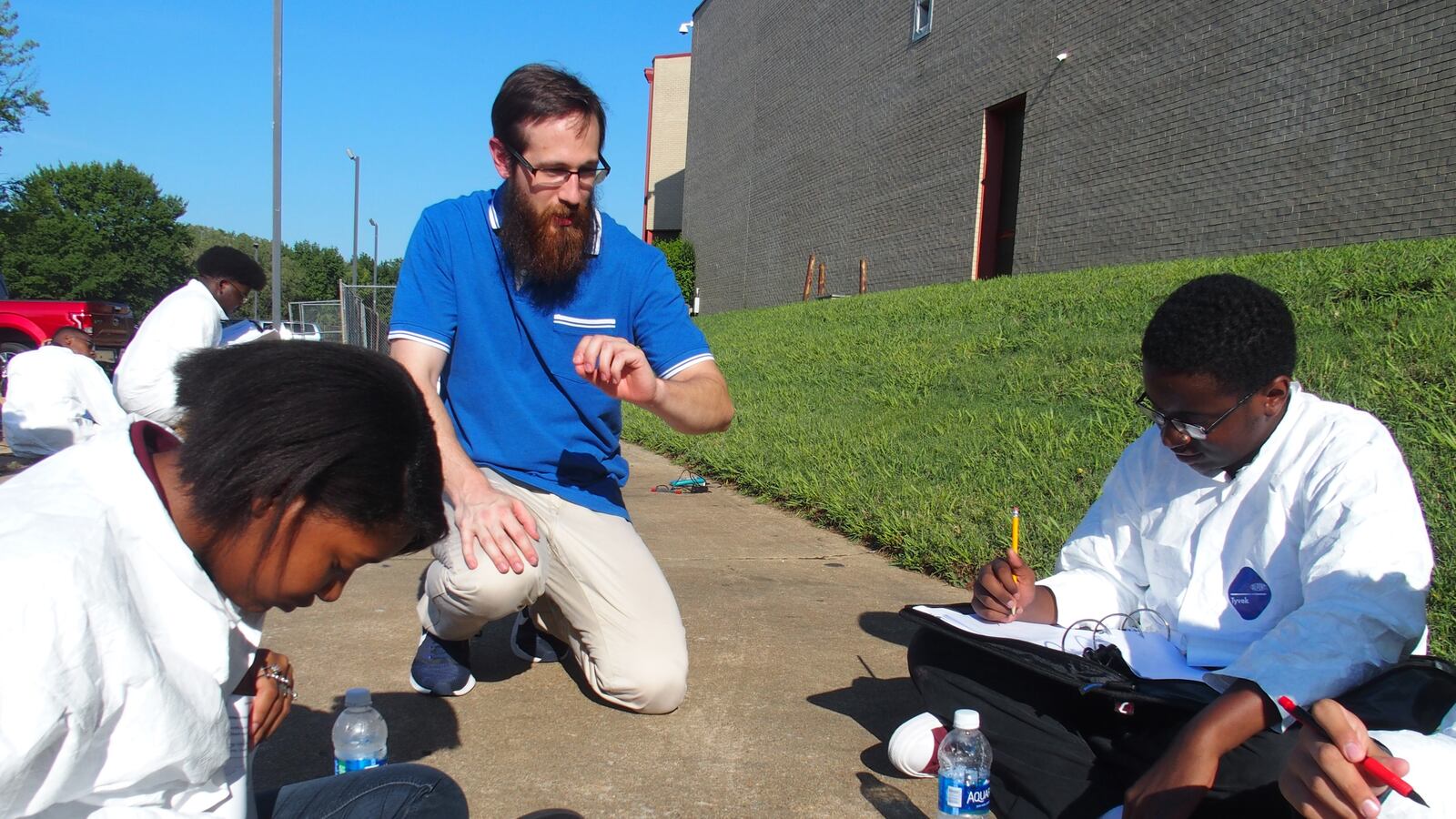Sitting on the hot sidewalk outside of Craigmont High School in Memphis, ninth-graders wearing paper lab coats carefully connect a gas sensor to a plastic bottle filled with fresh spinach — a biology experiment that they’ll repeat on Monday during the great American solar eclipse.
The objective is to measure the difference in carbon dioxide emission from a plant on a normal day and during a total solar eclipse.
“That’s crazy we’re experiencing history,” said an enthusiastic Elisha Holmes as he worked Friday with his lab partners.
Only steps away, a significant teaching tool that’s tailor-made for such an event sits idle. Craigmont’s 40-year-old planetarium is outdated and in need of a modernization costing up to $400,000. Shuttered since 2010, the space is used now as an occasional gathering place for school meetings and for the football team to watch game films.
Principal Tisha Durrah said the excitement of getting 500 safety glasses for students to watch this month’s rare solar phenomenon is bittersweet because the school’s planetarium isn’t being used.
“It’s a missed opportunity, and we don’t want to keep missing it,” she said.
Tennessee is among 14 states in the direct path of the total eclipse, where observers will see the moon completely cover the sun. For Memphis viewers in the state’s southwestern tip, they’ll see about 90 percent of the sun covered. It isn’t likely to happen again in the U.S. until 2024.
“Hopefully for the next solar eclipse, we’ll have it up and running,” Durrah joked this week as her science teachers found other ways to integrate the eclipse into their lessons.
Money raised so far to reopen the planetarium is a drop in the bucket. Craigmont has taken in about $6,000 toward the goal of fully revamping the space, updating technology and making the planetarium sustainable for years to come.
In the meantime, Durrah has contacted alumni and other potential donors in Memphis and beyond, including the New York planetarium of famed astrophysicist Neil deGrasse Tyson. Shelby County Schools has started a fund-raising account and is looking into other ways to help.
Durrah wants her students to participate in a penny drive as well. “Many of them don’t even know the planetarium is here,” she said of the unique theater.
Even though he’s found other ways to use the eclipse as a teachable moment, biology teacher Wayne Oellig wishes he could have produced simulations in the school’s planetarium on what a solar eclipse looks like from places like the moon or Mars. With the right software, he could help his students, many of whom come from low-income families, experience what a rainforest or historic battlefield looks like, too.
“You can use it for a whole school experience,” he said.
But the screens on the large dome are stained, and the antiquated projector in the center of the room is stuck in its base. A large device by the control panel looks like a first-generation computer, not a high-tech device that could help the school advance studies in science, technology, engineering and math.
Craigmont could get away with about $60,000 in repairs to make the planetarium operational, but it would be a short-term fix, the principal says. With a full renovation, the district could host tours from other schools, with their fees covering maintenance costs.
Durrah is confident that the investment would pay off. “When our students can relate to real-world experiences, it can enhance what’s going on here at our school,” she said.
Below, watch a video showing teacher Wayne Oellig talk about Craigmont’s planetarium and its possibilities.
With solar eclipse looming, shuttered school planetarium represents ‘missed opportunity’ for Memphis students from Chalkbeat Tennessee on Vimeo.

